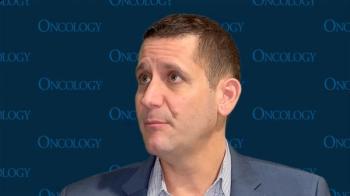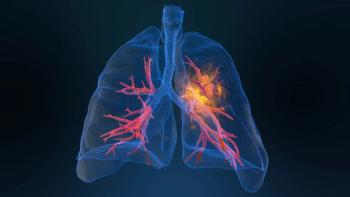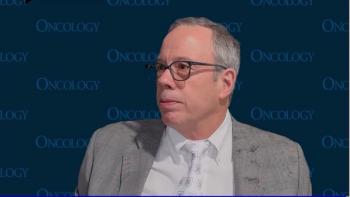
- Oncology Vol 31 No 7
- Volume 31
- Issue 7
Jeffrey Vacirca on How the COA Advocates for Community Oncology Practices and Patients
In this interview we discuss the goals of the Community Oncology Alliance, highlights from their annual meeting, and the challenge of transitioning cancer care to the hospital setting.
1.Your 1-year term as president of the Community Oncology Alliance (COA) started this year. What does this role mean to you, and what are your main goals during your term?
DR. VACIRCA: My biggest priority is to continue COA’s work to help shape good public policy that supports community oncology practices and the patients we serve, as well as the various initiatives underway to support practice administrators (
1) Ending the sequester cut to Medicare drug payments. We believe the Centers for Medicare and Medicaid Services (CMS) did not have the legal or constitutional authority to impose this cut.
2) Moving oncology payment reform forward, including thinking through how we can make the Oncology Care Model (
3) Protecting patients from pharmacy benefit managers (PBMs) and the many
4) Stopping the runaway
2.What were the most significant “takeaways” from the COA Community Oncology Conference that occurred in late April?
DR. VACIRCA: The biggest takeaway for me is that COA has a highly motivated and engaged membership. The record-breaking attendance (1,200+) of physicians, administrators, nurses, pharmacists, and more who were willing to take valuable time away from busy practices to attend the 2017 Conference is a testament to that. The Conference also made clear that community oncology practices have their work cut out for them. We’re fighting battles on many fronts that threaten the future of community oncology and the patient care we deliver. Most notably, this includes the need to stop PBM abuses of our patients and the runaway growth of the 340B drug program. That said, it was great to hear at the Conference the tremendous progress community oncology practices are making in advancing payment reform projects that are patient-centered and which reward high-quality care. From the ongoing work with the Oncology Medical Home (
3.What patient management/care delivery challenges are specific to daily practice in the community oncology care setting, and how does the COA provide support?
DR. VACIRCA: There are so many challenges community oncology practices face in trying to provide excellent patient care on a day-to-day basis, but lately the biggest challenge is absolutely PBMs. We have made so much progress in the fight against cancer over the last decade. New drugs and treatment options are giving my patients much better outcomes than ever before. But PBMs are focused on profits, not patients. Because of that they are presenting bigger and bigger obstacles to care-often life-saving care-that can halt and even reverse that trend. For many cancer patients, delaying treatment can be the same as denying treatment.
Physicians and administrators across the country have written to COA and to me personally with horror stories about how PBMs are negatively impacting patient care. The serious, sometimes dangerous, things I’ve heard include PBMs delaying treatment by as much as 6 weeks; unaccountable PBM bureaucracies with busy phone lines and flippant staff; unethical business practices; and incredible waste. We got so many of these PBM horror stories that the COA has started a PBM white paper series to bring more attention to the very real impact that these unaccountable middlemen are having on patient care.[1] COA is leading and supporting the fight against PBMs. We are focused on all
4.In what key or innovative ways is the COA supporting its goal of continued delivery of high-quality cancer care in the community setting, in the face of federal budget cuts and potential changes in patient insurability?
DR. VACIRCA: COA and its members are working extremely hard to advance new oncology payment and system reform initiatives that help address the cuts and changes that practices face. These include continuing progress on the OMH model, continued support for practices in the OCM, and even working to identify what the next iteration of the OCM (OCM 2.0) might be like. OCM 2.0 in particular has great potential to support and reward practices for delivering high-quality, high-value cancer care. We are currently working to design something that improves upon the existing CMS OCM, correcting some of the shortcomings in the current model.
Additionally, COA is advocating every day on Capitol Hill to move major oncology payment reform bills forward in the House and Senate. These include the bipartisan
5.One of the greatest challenges in community oncology practice today is a transitioning of cancer care to the hospital setting. A 2016 COA/Milliman report concluded that this move towards hospital-based cancer treatment-not increased drug costs-is the primary cause of increased costs of cancer care. Can you explain why this is?
DR. VACIRCA: The cost of cancer drugs remains a huge issue that drug manufacturers and the entire oncology community must immediately address. However, the
A big driver of this shift from the community oncology center to hospitals is the 340B Drug Pricing Program.[2] 340B allows hospitals to acquire drugs at discounts as high as 50%-discounts that they do not pass on to patients. To take advantage of these deep discounts, many hospitals have embraced 340B as an open-ended arbitrage (think buy low, sell high), allowing them a substantial increase in their drug revenue. So, what you are seeing is that 340B hospitals buy independent oncology practices because they prescribe high-cost cancer drugs (eg, often more than $10,000 a month for each patient). In turn, the deep-margin, tax-exempt 340B hospitals can make a substantial profit. The result has been that, in 2014, 340B hospitals accounted for 50.3% of all hospital outpatient chemotherapy infusions in the Medicare population. If we are to make any meaningful progress in controlling spending on cancer care, we need to take a much more holistic look at all the cost drivers, including site-of-service differences and the broken 340B program.
Financial Disclosure: The author has no significant financial interest in or other relationship with the manufacturer of any product or provider of any service mentioned in this article.
References:
1. Community Oncology Alliance. Delay, waste, and cancer treatment obstacles: the real-life patient impact of pharmacy benefit managers. April 2017.
2. Community Oncology Alliance. The 340B drug discount program in review: a look at the data and evidence to date. April 2017.
3. Community Oncology Alliance. Investigative white paper on background, cost impact, and legal issues relating to DIR fees.
4. Community Oncology Alliance. Community Oncology Alliance applauds new oncology payment reform bill by U.S. Senators Cornyn and Carper: oncology medical home model demonstration project will support quality and value in cancer care.
5. Fitch K, Pelizzari PM, Pyenson B; Community Oncology Alliance/Milliman. Cost drivers of cancer care: a retrospective analysis of Medicare and commercially insured population claim data 2004-2014.
Articles in this issue
over 8 years ago
Molecular Profiling in the Practice of Radiation OncologyNewsletter
Stay up to date on recent advances in the multidisciplinary approach to cancer.

















































































